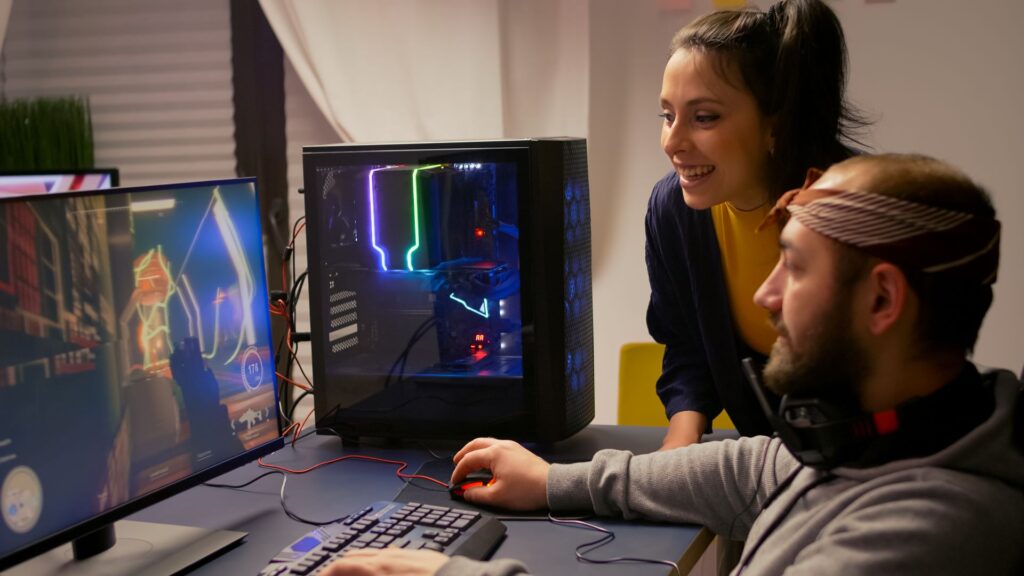Downloadable content (DLC) has revolutionized the gaming industry, providing developers with a powerful tool to extend the life of their games and enhance player engagement. Knowing how DLC boosts player engagement is essential if you’re planning to create your own game.
In recent years, the creation of DLC has become a standard practice for many game developers, offering players new and exciting content long after the initial release. Nowadays, it is a consensus among the industry that DLC boosts player engagement and contributes to the overall success of a game.
But how exactly does that happen? Not only do we want to explore how DLC boosts player engagement, but also why and how it has become such a popular and pivotal practice in the modern video game industry. So let’s get right to it.

How DLC boosts player engagement?
There are many answers to how DLC boosts player engagement, let’s talk about each one in detail.
Extended gameplay experience
One of the primary and most direct ways in which DLC enhances player engagement is by extending the gameplay experience.
By offering additional content, such as new levels, new characters, storylines, and missions, developers provide players with fresh challenges and experiences. This extension of the game’s lifespan keeps players invested for longer periods, preventing the game from becoming stale and maintaining player interest over time.
Community building and social interaction
DLC often introduces new multiplayer maps, modes, or cooperative missions, fostering community building and social interaction among players. This is another big way in how DLC boosts player engagement.
Gamers are drawn to the prospect of exploring new content with friends or engaging in competitive play with the latest additions. This social aspect not only enhances player engagement but also contributes to the growth of online gaming communities surrounding the title.
Monetization strategies
From a business perspective, DLC serves as a key monetization strategy for developers and publishers. By offering additional content for purchase, developers can continue to generate revenue from a game, often that had a lot invested in, long after its initial release.
What many people don’t know is that this ongoing financial support allows developers to reinvest in the game, providing resources for updates, improvements, and the creation of even more compelling DLC, therefore, impacting how DLC boosts player engagement.
Player personalization and customization
DLC often includes cosmetic items, customization options, and new character skins, allowing players to personalize their gaming experience.
This personalization fosters a sense of ownership and uniqueness among players, as they can showcase their individuality within the game. The desire to acquire and display these unique elements serves as a powerful motivator for players to stay engaged with the game.
Continuous updates and improvements
DLC is not solely about adding new content; it also enables developers to address player feedback, fix bugs, and implement improvements.
Regular updates and patches, often bundled with DLC releases, demonstrate a commitment to the game’s ongoing development. This responsiveness to player input fosters a positive relationship between developers and the player community, building trust and loyalty.
Seasonal and event-based content
Seasonal and event-based DLC can create a sense of urgency and excitement among players.
Limited-time content, such as holiday-themed events or special challenges, encourages players to return to the game regularly to experience and unlock exclusive items. This strategy not only boosts short-term engagement but also establishes a recurring cycle of player activity around specific events.

A brief history of DLC
To fully understand how DLC boosts player engagement, it is pivotal to know a little bit about the history of DLC and how it became such a centerpiece for video game companies today.
The concept of extending a game’s content beyond its initial release dates back to the era of expansion packs.
In the late 1980s and early 1990s, developers released expansion packs for popular titles like “The Secret of Monkey Island” and “Doom.” These packs were physical add-ons that players purchased separately, often containing new levels, characters, and storylines.
While not a true precursor to modern DLC, expansion packs set the stage for the idea of expanding a game’s universe post-launch.
With the emergence of digital distribution platforms, such as Steam, Xbox Live, and PlayStation Network, the mid-2000s marked a significant turning point for the gaming industry.
These platforms allowed developers to distribute content directly to players without the need for physical media. With this shift, the potential for delivering smaller, downloadable additions to existing games became more apparent.
One of the first notable instances of DLC controversy occurred in 2006 with Bethesda’s “The Elder Scrolls IV: Oblivion.” The infamous “Horse Armor Pack” became a symbol of the industry’s experimentation with microtransactions and cosmetic enhancements.
Priced at $2.50, the DLC offered little in terms of gameplay value, sparking a debate about the value and purpose of downloadable content.
As the industry matured, developers began exploring various DLC models beyond traditional expansion packs. From story expansions and character skins to map packs and weapons, DLC offerings diversified to cater to different player preferences.
Developers also experimented with different business models, introducing season passes, which bundled multiple DLCs at a discounted rate, and free-to-play games supported by optional in-game purchases.
Currently, the concept of live services and games-as-a-service (GaaS) gained prominence, with titles like “Destiny” and “Fortnite” reshaping the gaming landscape.
These games adopted a continuous development model, providing regular updates, events, and expansions to keep players engaged over an extended period. The success of these titles demonstrated the potential for ongoing revenue streams through a combination of initial game sales and in-game purchases.

The positive and negative impacts of DLC
But it is not all sunshine and rainbows when it comes to DLC. In the matter of how DLC boosts player engagement, the quality and fairness of this engagement are also put into question.
DLC is currently perceived as a double-edged sword in the realm of video gaming, offering players both extended playtime and additional content while concurrently drawing criticism for potential exploitation through microtransactions and a perceived lack of value.
This intricate landscape requires developers to navigate a fine line between monetization strategies and ensuring player satisfaction, crucial for sustaining a healthy gaming ecosystem.
On one hand, DLCs contribute significantly to the longevity of a game, allowing developers to continue engaging their player base long after the initial release. These expansions often introduce new storylines, characters, environments, and gameplay features, enriching the overall gaming experience.
However, the surge of microtransactions within DLCs has fueled discontent among gamers.
Microtransactions, involving the purchase of virtual goods or in-game currency with real money, can be seen as exploitative, especially when they create a pay-to-win dynamic or hinder progress for players who choose not to spend additional funds.
This contentious issue has led to debates surrounding the ethics of monetization strategies employed by game developers, with some arguing that it compromises the integrity of the gaming experience.
Moreover, the perceived lack of value in some DLCs has been a point of contention.
Players may express dissatisfaction if the additional content does not match the cost or fails to bring substantial innovation to the game. This can erode trust between developers and their player base, potentially deterring future investment in downloadable content and other monetization avenues.
To foster a positive gaming ecosystem, developers must prioritize transparency and communication. Clearly outlining the value proposition of DLCs, ensuring that microtransactions do not compromise fair competition, and actively seeking player feedback are essential practices.
Some successful approaches include offering free content updates alongside paid expansions, implementing in-game economies that balance progression and microtransactions, and engaging with the community to understand their preferences.
Ultimately, the challenge for developers lies in striking the right balance between revenue generation and player satisfaction.
When executed thoughtfully, DLCs can be a boon to both developers and players, extending the life of a game and providing a platform for continuous improvement.
The key is to approach monetization ethically, keeping the player experience at the forefront and fostering a collaborative relationship between developers and their audience.

How DLC boosts player engagement: what the future holds?
From its early days as expansion packs to microtransactions, the landscape of DLC has evolved significantly, providing players with a myriad of options to enhance their gaming experiences. It has proven to be a game-changer, significantly impacting player engagement and the longevity of titles.
As developers continue to refine their approaches to DLC, the future promises even more exciting opportunities for enhancing player engagement and creating immersive gaming experiences. This will likely be shaped by ongoing technological advancements, changing player expectations, and the pursuit of a sustainable and player-friendly business model.
We here at Main Leaf have seen the evolution of how DLC boosts player engagement very closely during our 11 years of activity in the game development industry, and we are looking forward to what the future holds.
If you liked this article, don’t forget to visit our blog, where we discuss many other projects related to the game development industry.

